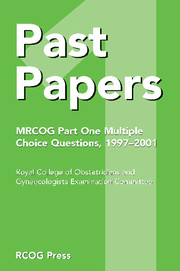Book contents
- Frontmatter
- Contents
- Introduction
- March 1997 – Paper 1
- March 1997 – Paper 2
- September 1997 – Paper 1
- September 1997 – Paper 2
- March 1998 – Paper 1
- March 1998 – Paper 2
- September 1998 – Paper 1
- September 1998 – Paper 2
- March 1999 – Paper 1
- March 1999 – Paper 2
- September 1999 – Paper 1
- September 1999 – Paper 2
- March 2000 – Paper 1
- March 2000 – Paper 2
- September 2000 – Paper 1
- September 2000 – Paper 2
- March 2001 – Paper 1
- March 2001 – Paper 2
- September 2001 – Paper 1
- September 2001 – Paper 2
- Index
September 2000 – Paper 2
Published online by Cambridge University Press: 05 July 2014
- Frontmatter
- Contents
- Introduction
- March 1997 – Paper 1
- March 1997 – Paper 2
- September 1997 – Paper 1
- September 1997 – Paper 2
- March 1998 – Paper 1
- March 1998 – Paper 2
- September 1998 – Paper 1
- September 1998 – Paper 2
- March 1999 – Paper 1
- March 1999 – Paper 2
- September 1999 – Paper 1
- September 1999 – Paper 2
- March 2000 – Paper 1
- March 2000 – Paper 2
- September 2000 – Paper 1
- September 2000 – Paper 2
- March 2001 – Paper 1
- March 2001 – Paper 2
- September 2001 – Paper 1
- September 2001 – Paper 2
- Index
Summary
1. The oxidation of pyruvate to carbon dioxide
A. occurs exclusively in the mitochondria of the cell.
B. can occur under anaerobic conditions.
C. involves intermediates which are also involved in amino acid catabolism.
D. is regulated by the concentration of acetyl coenzyme A in the cell.
E. is impaired in thiamine deficiency states.
2. Enzyme activity can be modified by
A. concentration of substrate.
B. concentration of product.
C. pH.
D. temperature.
E. concentration of coenzymes.
3. The rate of transfer of a substance into a cell by active transport
A. may be unrelated to concentration gradient.
B. is dependent upon molecular size.
C. is temperature dependent.
D. has a fixed upper limit.
E. is not reduced by the presence of a structurally similar substance.
4. Fatty acids reaching the liver from the fat stores may be
A. converted to glucose.
B. conjugated with sulphate.
C. metabolised in the tricarboxylic acid cycle.
D. incorporated into endogenous triglyceride.
E. converted into ketones.
5. Concerning folic acid:
A. It is a water soluble vitamin.
B. Conversion of dihydrofolate to tetrahydrofolate is inhibited by methotrexate.
C. Red cell folate concentration can be reduced by phenytoin.
D. Tetrahydrofolic acid is a carrier of 1-carbon units.
E. It is involved in synthesis of purines.
6. Effects of insulin include
A. increase in cellular growth.
B. increased hepatic glycogen synthesis.
C. decreased glycogen synthesis in muscle.
D. increased uptake of potassium ions in muscle.
E. increased uptake of potassium ions in adipose tissue.
- Type
- Chapter
- Information
- Past Papers MRCOG Part One Multiple Choice Questions1997–2001, pp. 152 - 161Publisher: Cambridge University PressPrint publication year: 2004



